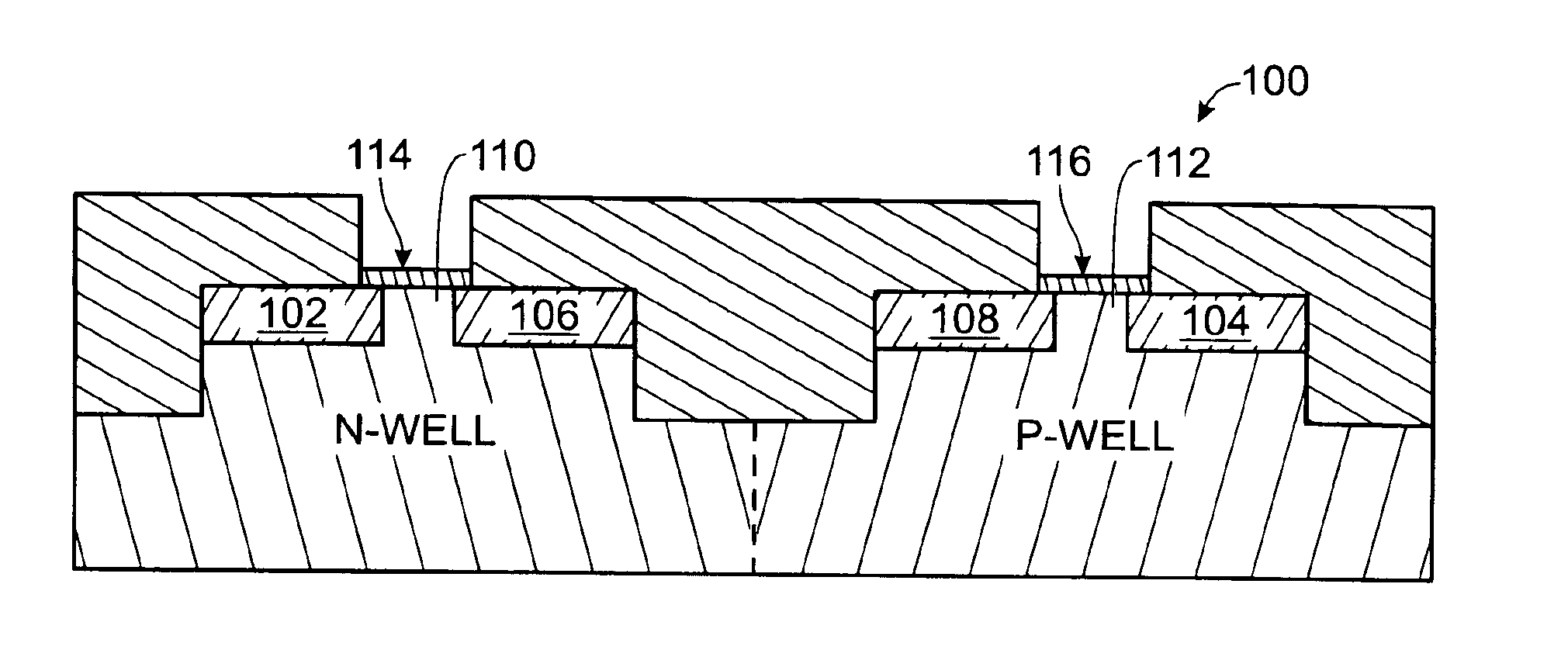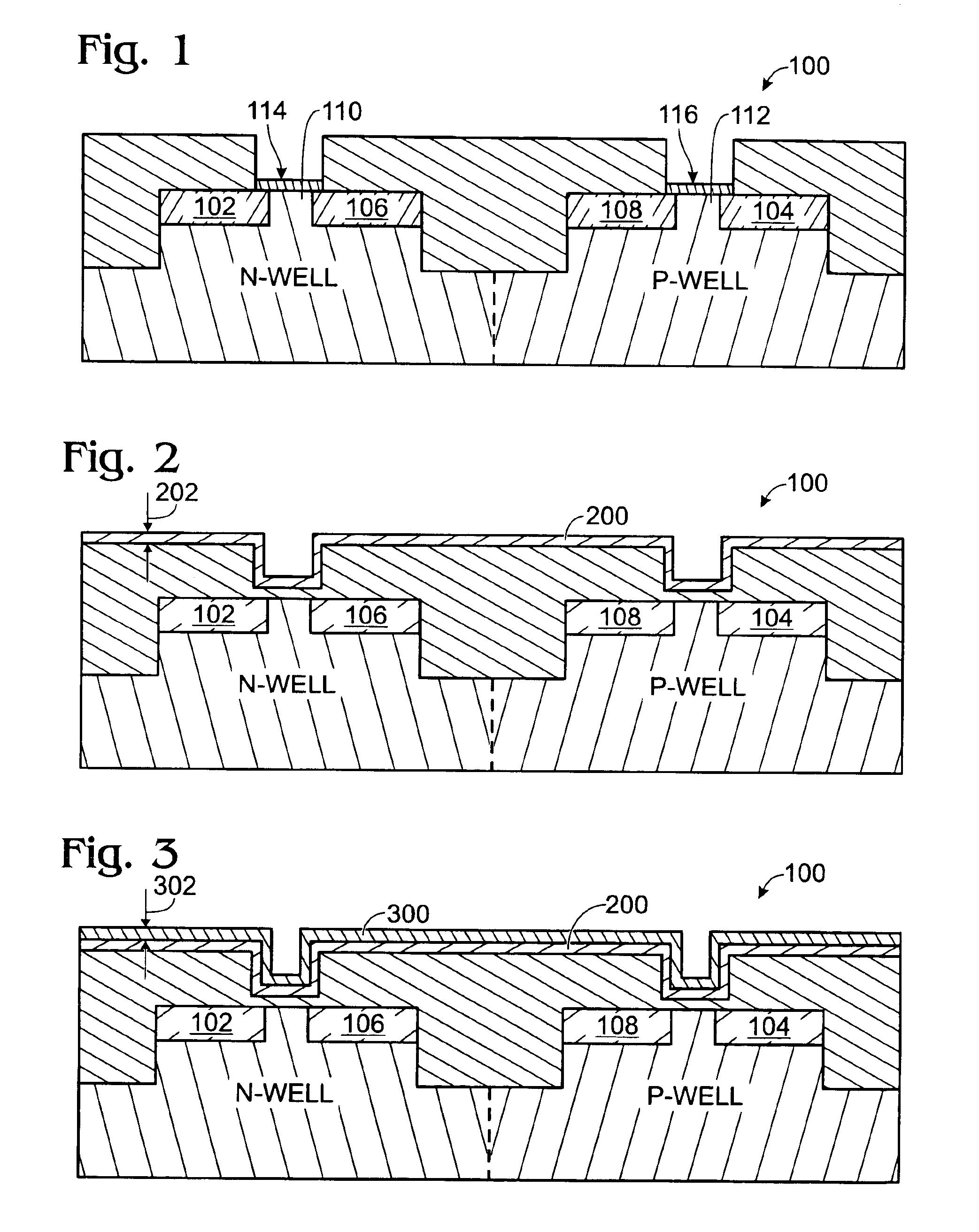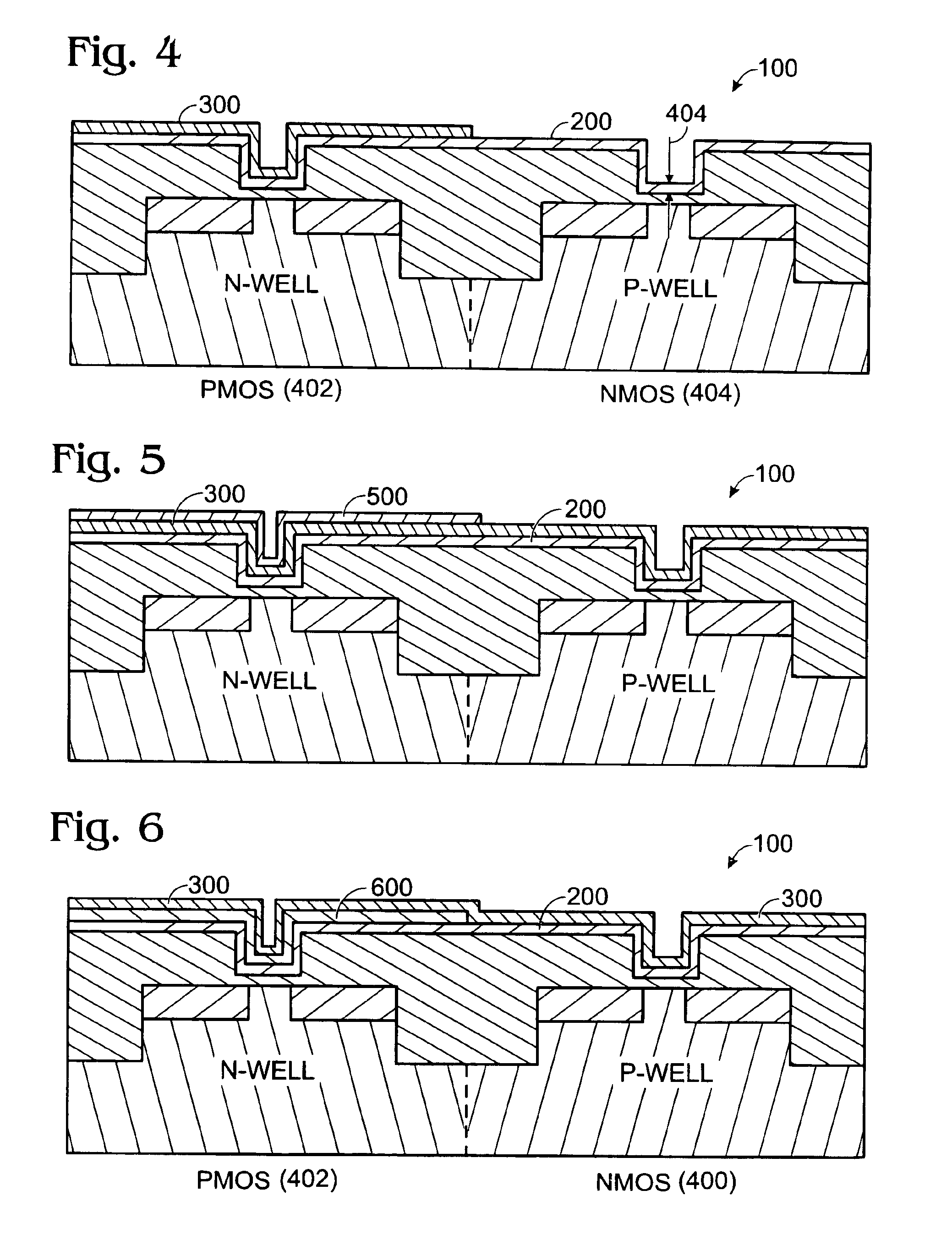System and method for integrating multiple metal gates for CMOS applications
a technology of integrated circuits and metal gates, applied in the direction of electrical equipment, semiconductor devices, semiconductor/solid-state device details, etc., can solve the problems of limiting the device speed, affecting the performance of transistors, and different problems of doped polysilicon gates, so as to eliminate contamination or damage to the underlying gate dielectric
- Summary
- Abstract
- Description
- Claims
- Application Information
AI Technical Summary
Benefits of technology
Problems solved by technology
Method used
Image
Examples
Embodiment Construction
FIGS. 1 through 8 are partial cross-sectional views of steps in the completion of the present invention dual-gate MOSFET with metal gate stack. FIG. 1 depicts the dual-gate MOSFET 100 prior to the deposition of the gate metal layers. The underlying sources 102 and 104, drains 106 and 108, channels 110 and 112, and gate dielectric layers 114 and 116 may be formed by any conventional process.
FIG. 2 depicts the dual-gate MOSFET 100 of FIG. 1 after the deposition of a first metal layer 200. The first metal layer 200 can be deposited to a desired first thickness 202, typically less than 200 Å, using any conventional process. Depending on the desired gate work functions, the composition of the first thin film 200 can be an elemental metal such as W, Ti, or Ta, binary materials such as Ta—N or Ti—N, or compounds consisting of more than two elements.
FIG. 3 depicts the dual-gate MOSFET 100 of FIG. 2 following the deposition of a second metal layer 300. The second metal layer is deposited to ...
PUM
| Property | Measurement | Unit |
|---|---|---|
| threshold voltage | aaaaa | aaaaa |
| thickness | aaaaa | aaaaa |
| thicknesses | aaaaa | aaaaa |
Abstract
Description
Claims
Application Information
 Login to View More
Login to View More - R&D
- Intellectual Property
- Life Sciences
- Materials
- Tech Scout
- Unparalleled Data Quality
- Higher Quality Content
- 60% Fewer Hallucinations
Browse by: Latest US Patents, China's latest patents, Technical Efficacy Thesaurus, Application Domain, Technology Topic, Popular Technical Reports.
© 2025 PatSnap. All rights reserved.Legal|Privacy policy|Modern Slavery Act Transparency Statement|Sitemap|About US| Contact US: help@patsnap.com



